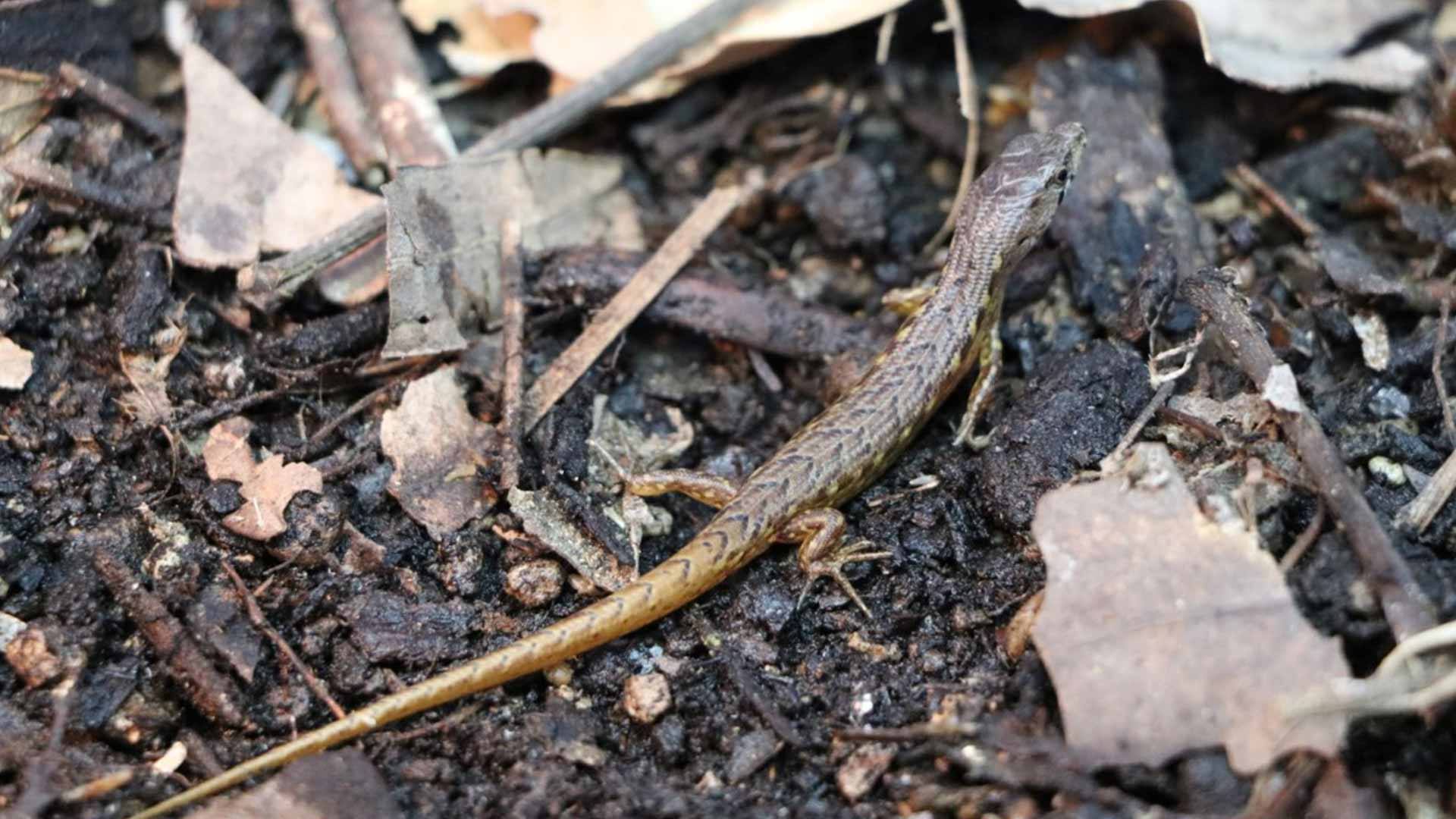We’ve got great news – six very rare New Zealand skinks were recently born at Auckland Zoo!
Rather large by New Zealand skink standards and highly secretive, chevron skinks live in humid native forest, often close to streams. As the only zoo in the world caring for chevron skinks, a litter of this size is a world-first – and doubles the population here at the zoo!
As the name suggests, the chevron skink is known for the v-shaped markings along its back which help camouflage them amongst the leaf litter on the forest floor. The species is known to Māori as niho taniwha which means ‘teeth of the taniwha’ because of these distinctive patterns.
An endemic ectotherm of Aotearoa, it is hard to say just how many skinks exist in the wild with only around 500 sightings reported since the species was first documented in 1906. Listed as ‘nationally vulnerable’ the chevron skink is only found on the islands of Aotea (Great Barrier) and Te Hauturu-o-Toi (Little Barrier), but historically was recorded across much of the upper North Island.
Our chevron parents arrived here as adults in 1997 so their ages (21 and 23 years, respectively) are estimates but the species is thought to live for more than 40 years. They were brought to Auckland Zoo from Aotea after they were attacked by kingfishers and found by a member of the public. During their early years here a research project initiated by partners at the Department of Conservation resulted in new detection methods and predator control assessments for the species that were then put into practice on the islands.



